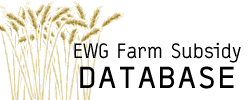Search the Databases
About Farm Subsidies
Frequently Asked Questions (FAQs)
Senate Approach Would Speed Payments to Texas Farmers for Farmland Conservation
Fate of Funding Hangs on Key Farm Bill Negotiations
Texas’s considerable – and growing – farmland conservation needs on private lands have gone chronically underfunded for years. That could all change as a handful of Senators and Representatives decide whether or not to adopt the Senate’s $4.3 billion annual investment in farmland conservation programs during final farm bill negotiations this month.
Currently, there is over $179 million in unfunded applications from Texas farmers who want to implement conservation practices on their land that would protect farmland and enhance drinking water sources and wildlife habitat.
These programs, which pay farmers to take steps to boost conservation, provide a range of benefits to rural communities while boosting family farm incomes – particularly among smaller struggling family farm operations.
New analysis by EWG shows that the Senate’s approach to boosting funding for farmland conservation programs would immediately get much needed assistance to more farmers in the state than the House bill. In comparison, by waiting until 2007 to ramp up farmland conservation programs, the House bill would fail to meet the growing demand for farmers who want to reduce their farm’s impact on local rivers and streams, enhance wildlife habitat and prevent sprawl from consuming more farmland. And, the longer farmers and communities have to wait to enroll in conservation programs, the more expensive it will be for taxpayers to address conservation problems.
In short, adopting the Senate’s conservation strategy will help more farmers, provide benefits to society and save taxpayers money.
Meeting Environmental Challenges with Agriculture Conservation Programs in Texas
Cleaner Rivers and Lakes: In Texas, 31 percent of surveyed rivers and streams and 29.5 percent of surveyed lakes have been classified as impaired. Agriculture is one of the leading sources of nonpoint source pollution in Texas, leading to water quality degradation across the state. Pathogens and organic enrichment are two of the leading causes of poor water quality.
Efforts to increase funding for the Environmental Quality Incentives Program (EQIP) in the next farm bill would help more Texas farmers adopt practices to reduce the level of sedimentation, nitrogen and phosphorus runoff into Texas waters. The current backlog of EQIP funding in Texas is $176 million. Increased funding for the Conservation Reserve Program, especially for grass and tree buffers near to water bodies, in the next farm bill would also help reduce agricultural pollutants in many Texas watersheds. Although soil loss is declining, Texas still loses approximately 318 million tons of soil per year from cropland. Through the CRP, farmers can retire highly erodible land without incurring economic costs.
Safer Drinking Water: In Texas, 297 drinking water systems serving 68,564 people exceeded EPA's nitrate threshold from 1995 through 2000. And 9 percent of shallow wells, failed to meet the EPA threshold as well. Pesticide use in Texas is 39 million pounds per year and nitrate use is 959,000 tons per year. Through USDA technical assistance and EQIP, Texas farmers could implement practices to reduce the use of these chemicals and prevent them from contaminating Texas's water bodies and source drinking water areas.
Protected Open Space and Working Landscapes: America's most profitable agriculture takes place near population centers. More than half of the value of American agricultural production comes from counties in and around urban areas. Every year, Texas loses an average of 233,000 acres of prime farmland per year to development and suburban sprawl (USDA/NRI). Converting prime farmland to housing developments and parking lots means that it is lost for meeting future food needs as well as for open space. Last year, then Governor George Bush's task force on conservation recommended the state establish its own purchase of development rights program. Unfortunately, funding for the federal Farmland Protection Program has not kept up with the interest coming from farmers nationally. Only one out of ten farmers who applied were accepted into the program over the last four years. If the Farmland Protection Program was adequately funded in the next farm bill it would help protect the natural resource base and open space in Texas for future generations.
Enhanced Wildlife Habitat: Texas farmland is home to many species of game and non-game wildlife, including deer, turkey, pheasant, armadillo, bear, quail, pronghorn antelope and javelina. Although Texas farmers have enrolled over 3.4 million acres in the Conservation Reserve and Wetlands Reserve Programs, lack of funding has created a backlog of farmers who want to enroll additional land in the programs. Texas farmers volunteered to enroll 1,737 acres in the WRP last year in permanent protection and another 557 acres under 30 year easements. At least $1.8 million is needed to eliminate this backlog. Many more farmers are volunteering for the Wildlife Habitat Incentives Program to enhance wildlife habitat on their working farmland. Currently, 90 applications from farmers and ranchers totaling $1.1 million are unfunded in Texas. Proposals to increase funding for these programs in the next farm bill would ensure that all farmers and ranchers who want to retire highly sensitive land for wildlife habitat or adopt new practices to create habitat can do so.
Healthier Food Supply: Many Texas producers are moving towards organic production, with 27,000 acres of farmland and 3,759 acres of rangeland now growing organically. Since organic food is one of the fastest growing segments in the U.S. food industry, Texas could create a healthier food supply and farm economy by increasing organic production. Proposals to include organic transition payments in the next Farm Bill would help those Texas farmers who want to switch to organic farming.
Copyright 2003, Environmental Working
Group. All Rights Reserved.
Headquarters 1436 U St.
N.W., Suite 100 | Washington, DC 20009 || info@ewg.org
California Office
1904 Franklin St. Suite 703 | Oakland, CA 94612 || california@ewg.org
